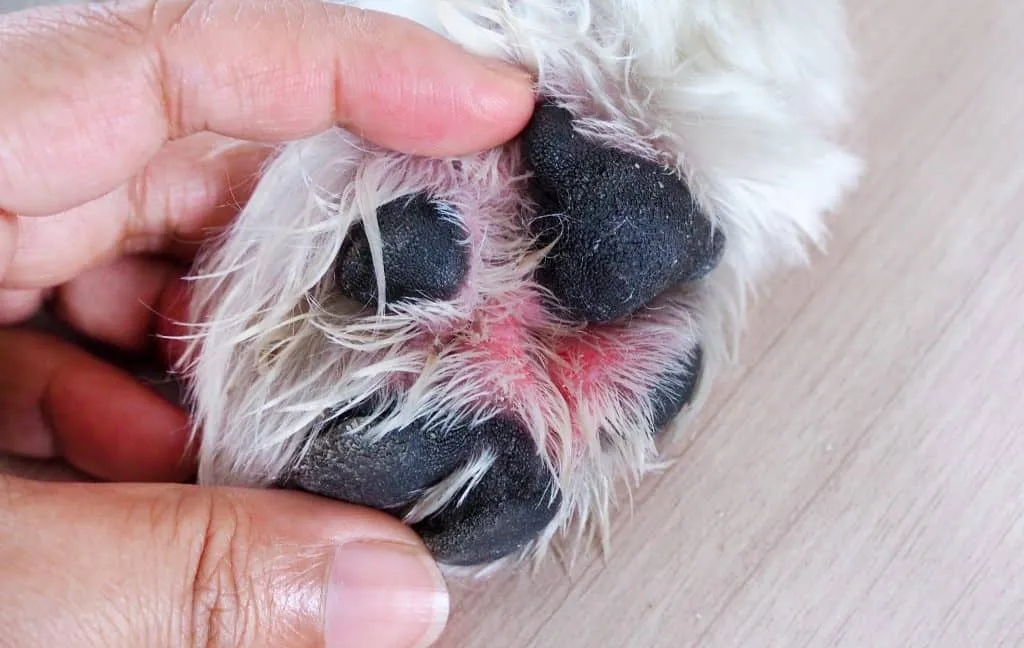Dogs, like humans, are susceptible to a variety of malignancies. We may be able to prevent the onset of such illnesses, although the causes may be unknown in other circumstances.
To acquire a deeper understanding of this subject, we asked four veterinarians to express their perspectives based on their experiences.
Continue reading to discover about the most prevalent cancers, their causes, symptoms, treatment, care, and preventative techniques as recommended by professionals!
We’d like to give special thanks to the following veterinarians for their insightful contributions:
This article has been reviewed by Eliezer Bauzon, Pet Lovers Centre’s in-house Pet Care Consultant.
*Disclaimer: The information provided in this article is not intended to replace the advice of a veterinarian. Consult a veterinarian for a proper diagnosis and guidance on your dog’s condition.
Common Types Of Cancer In Dogs
Tumors, whether benign or malignant, are common manifestations of cancer. As a result, the purpose of this article is to inform readers about the most frequent malignancies and malignant tumours that can affect dogs.
The above-mentioned vets identified these tumours based on their experience and the frequency with which they arise in dogs.
| Types of Cancer | Originates In | Commonly Found In/On | Symptoms |
|---|---|---|---|
| Lymphoma | Lymphocytes | • Lymph nodes • Spleen • Bone marrow | • Exhaustion • Appetite loss • Vomiting • Diarrhoea |
| Mast cell tumour | Mast cells, found in body tissues | • Skin • Liver • Intestine | • Lumps • There may be redness and swelling around the lump |
| Melanoma | Skin or mouth | • Skin • Mouth • Toenails | • Lumps • Swollen toe |
| Osteosarcoma | Bone cells | • Any bone | • Lethargy • Loss of appetite • Lameness • Swelling |
| Hemangiosarcoma | Cells in blood vessel walls | • Spleen • Liver • Heart | Located Internally • Lethargy • Loss of appetite • Weight loss Located externally • Lumps • Swelling |
Lymphoma
Most commonly found in: lymph nodes, spleen, bone marrow
In dogs, lymphoma, or cancer of the lymphocytes and lymphatic system, is a prevalent type of cancer. According to Dr. Sarah Reidenbach, it can account for up to 25% of all canine cancer cases (DVM).
When a dog has this type of cancer, it may display signs of tiredness, loss of appetite, vomiting, or even diarrhoea.
Mast cell tumour
Most commonly found in: skin, liver, intestine
Mast cells are a type of white blood cell that have an impact on the body’s allergic reaction, which can lead to the formation of malignant tumours.
Mast cell tumours are a type of skin cancer that appears as nodules on the surface of the skin. The tumour has the potential to spread to other parts of the body, including the liver and intestine.
It can be graded in a variety of ways, including the tumor’s size, the sorts of cells discovered after a biopsy, and how far it has spread.
Melanoma

Most commonly found in: skin, mouth, toenails
Melanoma is a tumor-forming kind of skin/oral cancer. Tumors can appear in the mouth, on the skin, or under the toes. Those seen on the skin and in the toenails are usually cancerous.
The pigmented cells are affected by the growth, which can spread throughout the body. Swelling, discomfort, and even infections may occur around the tumour.
Osteosarcoma
Most commonly found in: any bone
Osteosarcoma is a type of cancer that affects the bones in canines, according to Dr. Reidenbach. One of the most painful and dangerous malignancies, the tumour can develop on any bone in the body.
According to Dr. Joanna Woodnutt (MRCVS), dogs diagnosed with osteosarcoma have a two-month survival rate. Rather than extending the dog’s life, the treatment usually focuses on increasing the dog’s quality of life. As a result, it’s sometimes considered one of the deadliest cancers in dogs.
Hemangiosarcoma
Most commonly found in: spleen, liver, heart
Hemangiosarcoma is a malignancy of the cells that line the insides of blood vessels. It can spread quickly and affect any part of the body. The most prevalent sites for growth are the spleen, liver, and heart.
The tumour, which is loaded with blood, is prone to rupturing, resulting in blood loss in the dog. As a result, Dr. Reidenbach calls cancer a “ticking time bomb.”
Causes Of Cancer In Canines

Cancer in dogs can be due to age, genetics or environmental factors.
AgeCancer risk in dogs often increases as they get older. This could be owing to the dog’s weakened immune system, prolonged exposure to toxins, and an increased risk of cell mutation, according to Dr. Reidenbach.
However, lymphoma is an exception to this rule, according to Dr. Woodnutt, because the risk of this type of cancer diminishes after the age of six.
Genetics: Dog Breeds That Are More Prone To CancerVeterinarians like Dr. Leslie Brooks (DVM) have already discovered that particular dog breeds are more prone to certain types of cancer.
Mast cell tumours and histiocytomas, for example, are more common in Boxers. Lymphoma is also more common in Golden Retrievers
Environmental: Second-hand Smoke ExposureSecondhand smoking is harmful to dogs’ health in the same way that it is to humans’. Inhaling second-hand smoke, according to Dr. Woodnutt, could put dogs at risk for nose and lung cancer.
Environmental: Agricultural ChemicalsWhen dogs step on lawns or smell the ground with their snout, they may come into touch with agricultural chemicals. These carcinogens may raise the risk of cancer.
Environmental: Prolonged Exposure To The SunIf dogs with light fur are exposed to the sun for an extended period of time, they are more likely to acquire skin cancer. This is especially true if they expose regions of their body to the sun, such as their belly, which is only sparsely coated.
Symptoms Of Cancer In Canines
The symptoms for cancer in dogs may include
- Abnormal or rapidly growing swellings
- Sores that don’t heal
- Loss of appetite and weight loss
- Bleeding or discharge from body openings
- Difficulty eating, swallowing, or breathing
- Lameness
- Difficulty urinating or defecating
Treatment For Cancer In Dogs

The four main types of treatment for canine cancer include
- Surgery
- Chemotherapy
- Radiation therapy
- Immunotherapy
The treatment options will depend on the type and stage of the cancer.
How to Care for Dogs with Cancer
Signs that your dog is in pain
Look out for these signs in order to be aware of when your canine friend is suffering.
- Limping
- Pacing
- Excessive panting
- Refusing to lie down
- Difficulty breathing
- Lack of appetite
- Loss of interest in the people, toys and activities they’ve always enjoyed
What To Feed Dogs With Cancer

When it comes to feeding cancer-stricken dogs, it’s critical that they get enough nutrients.
There are a few fundamental suggestions that can be considered below.
- Relatively low amounts of simple carbohydrates
- Moderate amounts of fats, particularly omega-3 fatty acids
- Proteins with fat such as chicken, turkey, pork, fish and eggs
It’s crucial to remember, however, that food recommendations vary by dog and cancer type.
Certain dogs may require canned food, human food, or extra incentives to encourage them to eat, according to Dr. Sara Ochoa (DVM).
How to Prevent Your Dog from Getting Cancer
Female dogs that are spayed have a lower risk of developing breast cancer. Dogs spayed after their second heat cycle are 86 percent more likely to get breast cancer than those spayed earlier, according to Dr. Woodnutt.
However, spaying may increase the risk of other malignancies, such as osteosarcoma.
Avoid sunlight exposureDogs should be kept out of the sun during the hottest hours of the day to lessen their chances of developing skin cancer. If you expect them to be exposed to the sun for an extended period of time, you might want to consider using pet-specific sunscreen.
Avoid chemical exposureYou may assist your dog to avoid exposure to these toxins by using organic fertilisers instead of agricultural chemicals. You should also avoid allowing them to walk in other people’s yards.
Supporting Beloved Canines with Cancer
Pet owners may face significant financial hardship as a result of cancer treatment and trips to the veterinarian. Purchasing pet insurance can help make treatment more reasonable by covering the costs of surgery, chemotherapy, and other cancer treatments. As a result, your pet will receive the best possible care in their fight against cancer. Visit any of the Pet Lovers Centre branches near you for more information.



